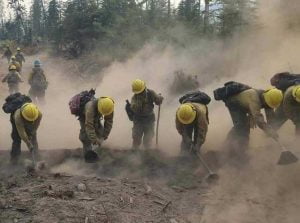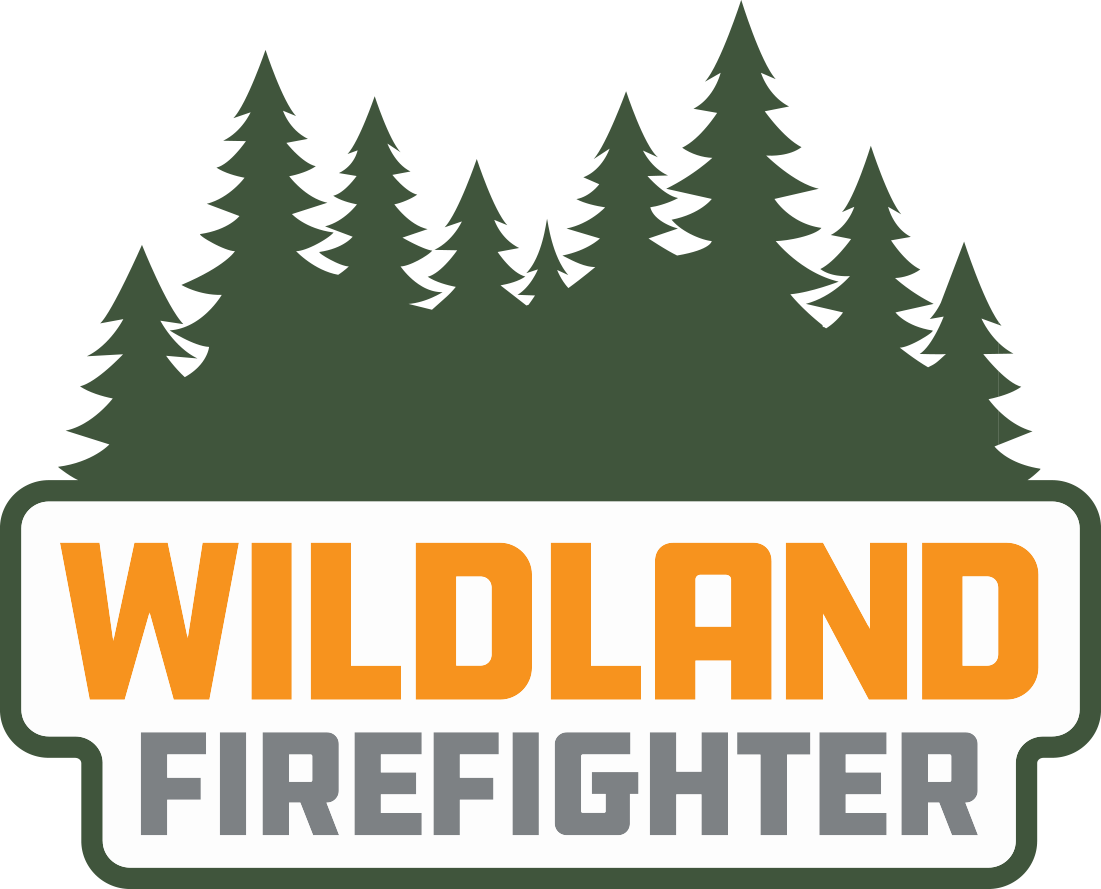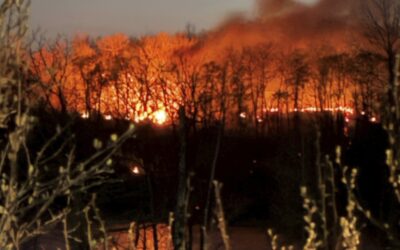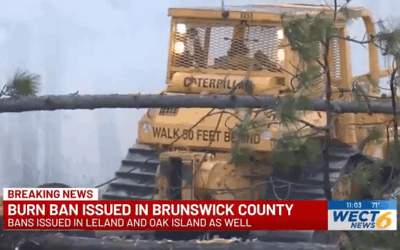
Source: USFA
Source: USFA
Wildland firefighters are exposed to many of the same naturally occurring respiratory hazards as structural firefighters. They are also exposed to many of the same man-made respiratory hazards, especially when fighting fires in or near the wildland urban interface.
However, unlike structural firefighters, wildland firefighters are unable to use the current standard respirator systems. They are heavy and bulky, taking up valuable carrying capacity needed for the tools and supplies required for wildland firefighting.
The Department of Homeland Security’s Science and Technology Directorate (S&T) is working with its partners to design and test a Wildland Firefighter Respirator that meets the specific needs of these firefighters. This new respirator system for wildland firefighters:
- Is chest-mounted and has a lightweight mask covering just the mouth and nose.
- Uses an electric blower to force filtered air to the mask, relying on AA batteries for power. During early testing, first responders gave S&T feedback that drawing air through the filter system could be tiring while hiking through wilderness areas.
- Relies on filtration instead of compressed air tanks and can go an entire shift before it needs changed.
- Weighs less than 1½ pounds.
The California Department of Forestry and Fire Protection (CAL FIRE), the National Fire Protection Association, the U.S. Forest Service, the International Association of Fire Fighters, the International Association of Fire Chiefs, and local Colorado fire departments all contributed to the design and testing of this new respirator.
Continued development and testing of the Wildland Firefighter Respirator are underway. Visit the S&T website for updates on this technology that has the potential to provide a big leap forward in the fight against wildfires and protecting firefighters.




